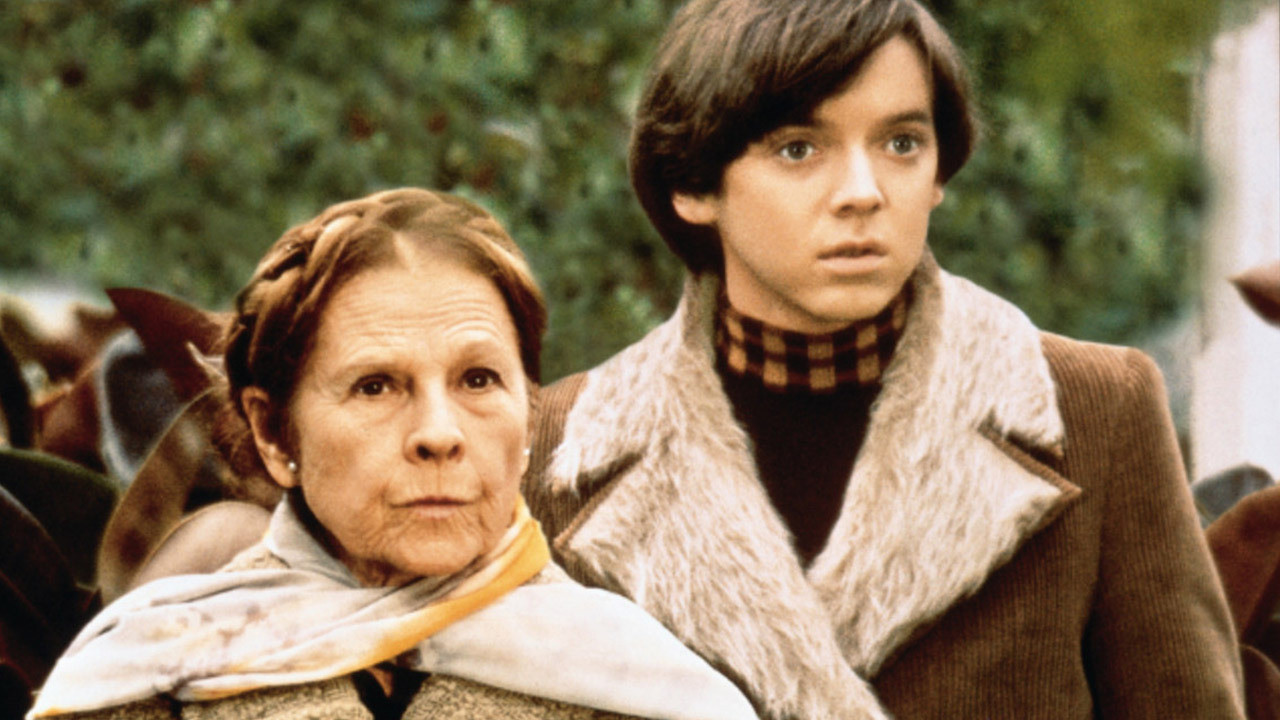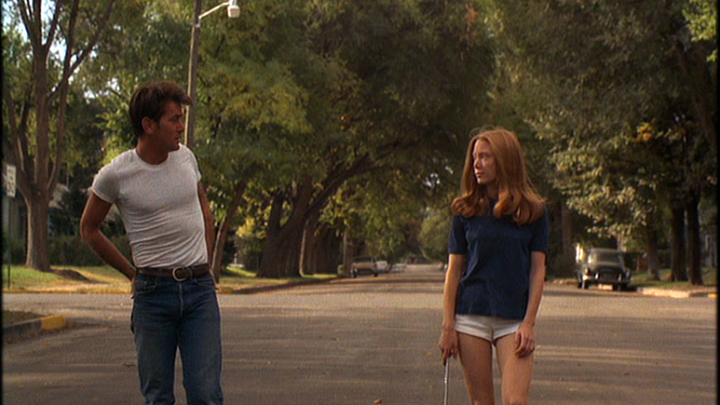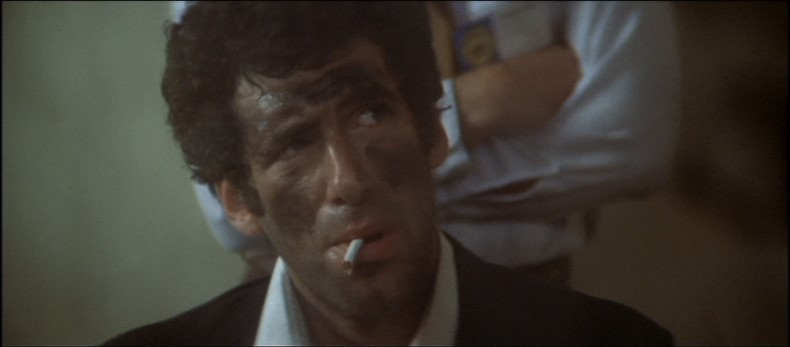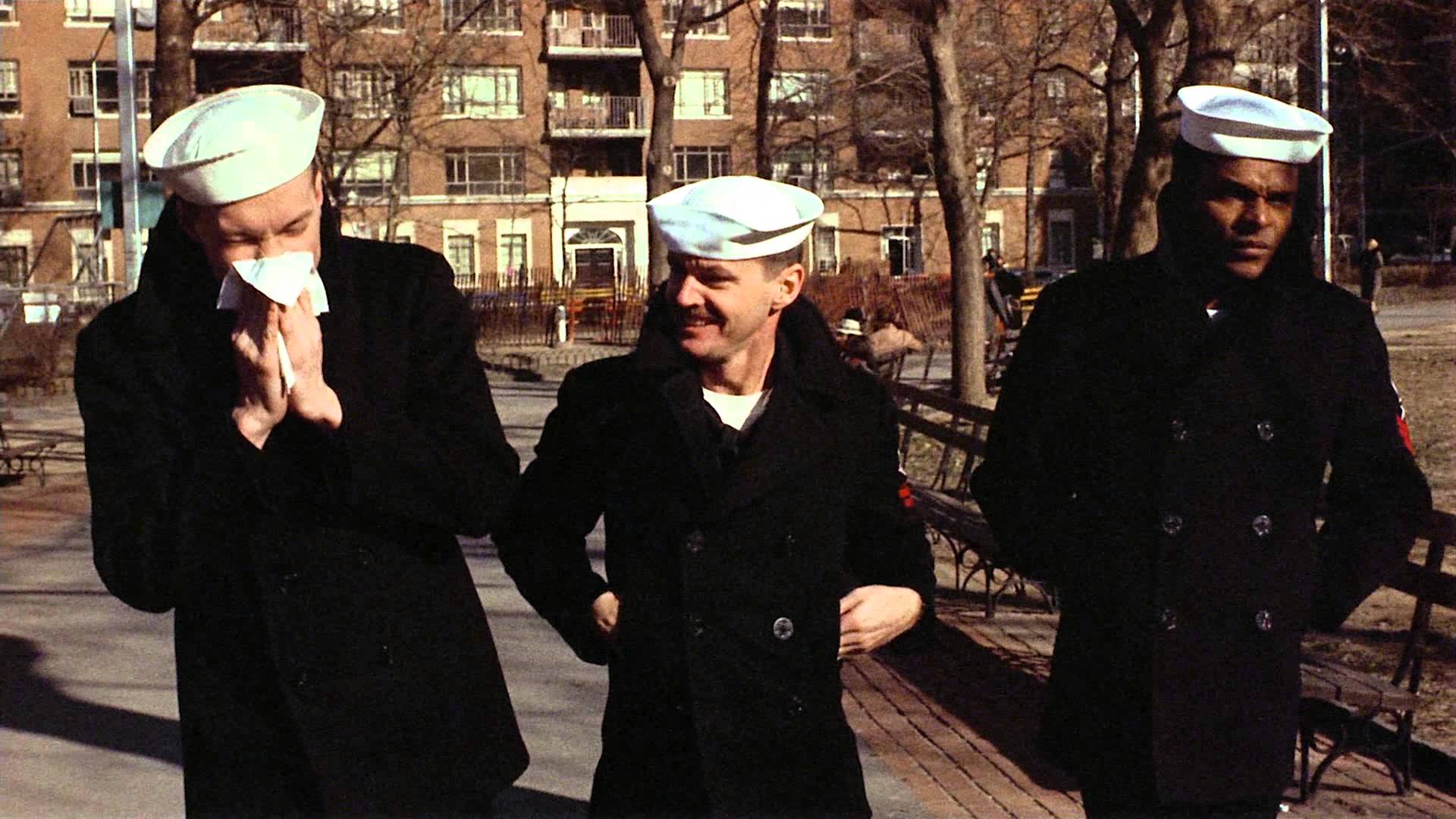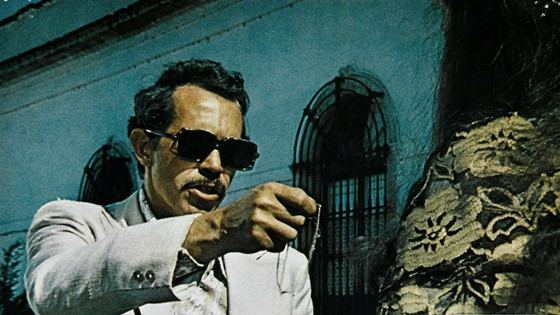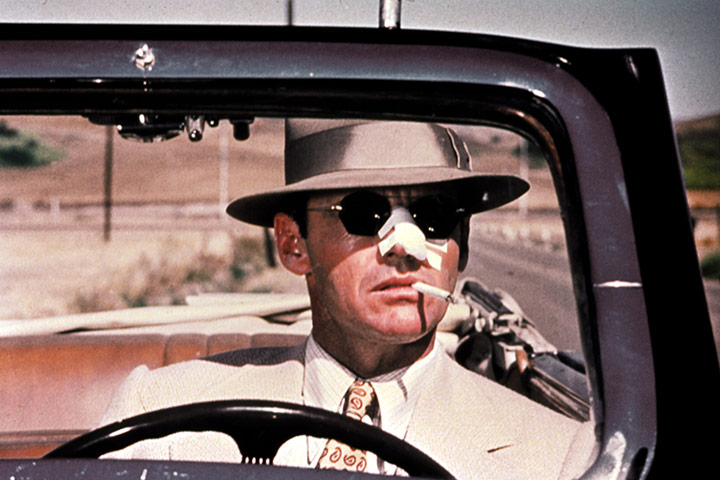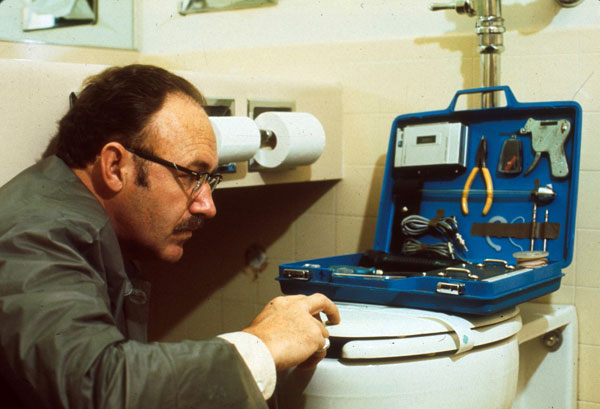7. Harold and Maude (Hal Ashby – 1971)
Based on a screenplay written by Colin Higgins which was later published as a novel, Harold and Maude is a deadpan black comedy with existentialist overtones directed by Hal Ashby.
The story deals with Harold, a young man who is obsessed with death and who is unwilling to subscribe to the meaningless and conventional lifestyle, which his mother and army officer uncle have in store for him. He keeps staging fake suicides to get his mother’s attention, modifies his car to look like a hearse and randomly attends strangers’ funerals.
At one of these funerals he meets Maude, a lively and eccentric 79 year old lady. They form a friendship and eventually even fall in love and it is Maude who teaches Harold that life is in fact a precious gift and that one should live it to the fullest.
A commercial as well as critical failure upon its release, Harold and Maude has since become a cult classic, regularly showing up on various cult and comedy “best of” lists. Its anti-establishment and existential themes, dead-pan humour in regards to suicide and especially its subject matter of a relationship between a teenager and a 79 year old lady even feel original and risqué in today’s day and age.
And whilst the behaviour of the protagonists is eccentric, the supposedly “normal” world they inhabit is clearly even more insane. A very idiosyncratic film if ever there was one, Harold and Maude is a truly unique piece of work that only could have been made in Hollywood in the early seventies.
8. Badlands (Terrence Malick – 1973)
Loosely based on the real-life murder spree of Charles Starkweather and his girlfriend Caril Ann Fugate in 1958, Badlands was the directorial debut of Terrence Malick as well as the first leading role for Martin Sheen in a feature film.
Holly (Sissy Spacek), an impressionable and bored teen from a little town, falls for Kit (Martin Sheen), a guy ten years her senior who thinks of himself as a James Dean-like rebel. When the girl’s father (Warren Oates) tries to break them up, Kit kills him and the pair start a multi-state killing spree as they go on the run from the law.
Told in dreamy voice-over by Holly, who describes the details of their adventure in romantic clichés, as if she’s living a romantic novel which they are starring in. The couple however seem unable to properly communicate as Kit is too obsessed with his new-found folk hero status and Holly too clueless and starved for attention to turn him away. Meanwhile the law is slowly closing in on them.
Critically acclaimed yet unsuccessful at the box-office upon its initial release, the film already bore many of trademarks later associated with Malick’s work, including the voice-over narration, sublime visuals and a highly lyrical tone. The film has since become somewhat of a cult classic and has taken its place amongst Malick’s finest works. A clear example of directors being given artistic freedom at the time, Badlands announced the arrival of a true American auteur.
9. The Long Goodbye (Robert Altman – 1973)
A seventies reworking of Raymond Chandler’s novel of the same name which was originally set in 1950’s Los Angeles, The Long Goodbye depicts private investigator Philip Marlowe (Elliott Gould) as a fish out of water and seemingly in the wrong era as he finds himself in a 1970’s Hollywood setting.
One night Terry Lennox shows up at Philip Marlowe’s place and asks his friend for a lift to Tijuana. Marlowe obliges but when he gets back to his apartment, the cops are waiting for him as they suspect that Terry has murdered his wife. As Marlowe refuses to cooperate, they book him but he’s released after three days as it turns out that Lennox has committed suicide.
He then gets hired by a woman named Eileen Wade as her husband Roger Wade (Sterling Hayden), an alcoholic author with writer’s block, has gone missing and she wants Marlowe to track him down. As he starts to investigate he learns that the Wades and the Lennoxes were connected and suspects there might be more to his old friend’s case then meets the eye. Meanwhile he also threatened by a gangster who Lennox apparently owed some serious money to.
A deconstruction of the detective genre and film noir as well as a send up of 1970’s mores and Hollywood itself, The Long Goodbye deals with a decent man with moral codes straight out of the fifties who finds himself in a self-obsessed society where morals have completely gone out the window. He is seemingly too naïve for the circumstances he finds himself in, reflecting exactly how a generation of young Americans were feeling at the time.
10. The Last Detail (Hal Ashby – 1973)
Another great performance of a nonconformist by Jack Nicholson and another great entry into the American New Wave, The Last Detail failed to find an audience at the time of its release but has since developed a loyal fanbase.
Two navy men, “Badass” Buddusky (Jack Nicholson) and “Mule” Mulhall (Otis Young) are assigned to escort a young sailor Larry (Randy Quaid) to prison. Larry has received an excessive eight year sentence as he attempted to steal a polio donation can, a charity which happebed to be organised by the Commanding Officer’s wife .
They are given one week to take him in and Buddusky convinces Mulhall that they should spend this week initiating the kind and shy Larry into manhood before he will have to waste the best years of his life in jail.
Columbia was initially reluctant to release the movie due to its incessant cursing but after Jack Nicholson won Best Actor at Cannes they gave the film a shot and it was consequently nominated for three Oscars (Best Actor, Best Supporting Actor and Best Adapted Screenplay for Robert Towne). Despite these nominations and the critical acclaim, the film failed to find an audience at the time but has since been recognised as one of the noteworthy and exemplary works of the American New Wave.
11. Bring Me The Head Of Alfredo Garcia (Sam Peckinpah – 1974)
A cult action crime drama by Sam Peckinpah made on a low budget as his previous film, Pat Garrett And Billy The Kid, had failed at the box-office, Bring Me The Head Of Alfredo Garcia was the only film made by Peckinpah, which arrived on screens without interference from a studio and was described as “pure Peckinpah” by the director himself.
Whereas basically all of Peckinpah’s films during this period could easily have made this list, I chose this movie as its the director’s most idiosyncratic and personal work.
Bennie, a retired US army officer (Warren Oates) and his prostitute girlfriend travel through Mexico in search of Alfredo Garcia who has a one million dollar price on his head for impregnating the daughter underworld figure “El Jefe” (Emilio Fernandez). But Garcia is already dead and now Bennie as well as various other shady parties try to get to the corpse in order to be able to claim the bounty.
The film features Warren Oates in one of his best roles ever but, like many of the movies on this list, failed to make money at the time of its release. In fact, it was even reviled at the time. The most divisive movie in Peckinpah’s career, some still consider it terrible, others a masterpiece.
Either way, it’s a must-see for Peckinpah fans and if you like your movies gritty and grimy, Bring Me The Head Of Alfredo Garcia is a slice of unconventional and unusual New Hollywood which should not be missed. Another prime example of a film which could only have been produced in the Hollywood during this era.
12. Chinatown (Roman Polanski – 1974)
Arguably the best neo-noir ever made, Roman Polanski’s Chinatown perfectly reflected the uncertainty and cynicism of the seventies as well as being one of the great films of the American New Wave.
Jack Nicholson stars as J.J. “Jake” Gittes, a cop turned private eye in 1930’s Los Angeles, who is seemingly hired to expose a case of adultery by the man’s wife. He finds the man with a young blonde, takes photos of the couple and thinks that that will settle the case but when the photos appear on the front page of the newspaper the next day, the man turns up dead and the woman who hired him turns out to not actually be his wife, Gittes realises that he has been set up and that there is a whole lot more at stake.
From there on in Jake investigates further, getting himself caught up in an intricate web of deceit, corruption and more murder, all seemingly related to the city’s water supplies and shady real estate deals. When Jake finally thinks he has it all figured out, the greatest depravity still awaits him.
Great performances from Jack Nicholson, Faye Dunaway, John Huston and Roman Polanski himself in a single yet highly memorable scene in conjunction with a near perfect screenplay by Robert Towne and superb direction by Polanski all make Chinatown an absolute classic. The film was nominated for ten Oscars but ended up winning only one for Best Original Screenplay. It also won the Golden Globes for Best Picture, Best Actor, Best Director and Best Screenplay that year.
13. The Conversation (Francis Ford Coppola – 1974)
Francis Ford Coppola only made masterpieces in the seventies but whereas the Godfather movies and Apocalypse Now were large scale films, The Conversation was a smaller more intimate piece of work, which nonetheless ranks as one of his finest achievements. And whilst the aforementioned films could also easily have made it on this list, The Conversation appeared more suitable with its smaller production scale and its clear theme of paranoia.
The story deals with Harry Caul (Gene Hackman), a paranoid surveillance expert, who is hired to secretly tape a conversation between a couple but starts believing that they will be murdered, possibly as a result of his work. He refuses to give the tape to the party who hired him to make the recording but when it is later stolen from his apartment Harry’s world slowly starts coming apart at the seams as his conscience is weighing on him heavily and his paranoia increases.
With an exceptional supporting cast of Coppola regulars at the time (Robert Duvall, John Cazale, Harrison Ford and Frederic Forrest) and a fantastic screenplay, The Conversation is to sound design what Antonioni’s Blow-Up, a film which this movie in a way pays tribute to, was to imagery. The movie failed commercially at the time even though it was lauded by critics and won the Palme D’Or at Cannes in 1974, but has since found its rightful place in the pantheon of great seventies Hollywood cinema.
